By Jeffrey A. Rendall, Images Courtesy of Nike Golf
BEAVERTON, OR – Geometry. For those similarly mathematics challenged, it was the class in between Algebra and Algebra II (or at least it used to be) in high school. Geometry was full of formulas, theorems and proofs, most of which you didn’t think you’d ever use again if you took the path towards liberal arts in college (like I did).
But aside from remembering your basic Pythagorean theorem, Geometry creeps into our world in so many other ways – and when you’re talking about golf, Nike is making it very relevant, indeed, with the introduction of some clubs that just don’t look like your garden-variety golf sticks. We’re talking about the SasQuatch driver and the Slingshot OSS Irons.
The SasQuatch driver was introduced last fall (2005), making the usual splash when accompanied and propelled by the world’s undisputed golf heavyweight, Tiger Woods. Woods’ use, together with another creative Nike ad campaign got things going – but once it started showing up in the local pro shops, the SasQuatch was hard to miss, due to its revolutionary different shape and unique color scheme.
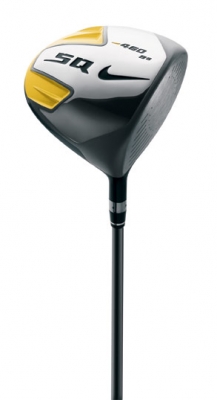 |
Nike’s club design guru, Tom Stites (Director of Product Creation, Clubs), says it’s the SasQuatch’s geometry that makes all the difference, including the driver’s distinctive looks: “The SasQuatch’s look is determined by its geometry. The extreme distance from front to back moves a much higher percentage of mass to the back of the club. Placing that much weight to the rear increases the moment of inertia (MOI), and this helps everyone hit better shots.”
There we go again, with another math/physics term, ‘moment of inertia,’ but I think we all get the point that it basically means we’ll hit it higher and farther when we use the SasQuatch. In a day and age where golf clubs are starting to resemble big globs of metal on the end of a stick, the SasQuatch digs out its own niche as something that’s really ‘out there’ in terms of appearance.
Don’t worry if you’re one of the few who hasn’t ‘encountered’ one – you’ll know it when you see it.
I asked Stites if he was worried about the marketing aspect of producing something so unusual, and he admitted there was some trepidation in the beginning. “At first we were worried that others might not ‘get it,’ but after the performance differences kicked in, almost everyone understood and came to love the new look,” Stites said.
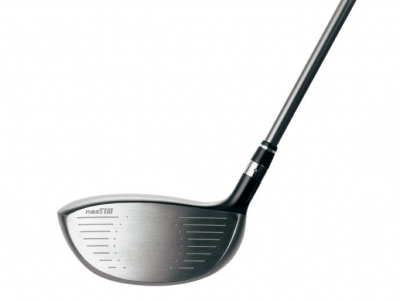 |
It never hurts to have the most recognizable player in golf waving it around several times a round. Woods gets by far the most ‘face time’ on TV, and a good portion of that is devoted to following his booming tee shots. The fact that Woods has had some troubles in 2006 when hitting a driver doesn’t really detract from the club’s potential, as even the world #1 would admit it’s the operator, not the driver.
For his part, Woods helped with the conceptual design of the SasQuatch, as part of his sizable endorsement contract includes offering opinions and input on development of products. In the past, we’ve chronicled Woods’ almost robot-like ability to help test the newest and latest, and there was no lack of assistance here, either.
“The dark color part of the design resembles the exact driver shape that Tiger likes,” Stites explained. “The added silver part of the geometry is behind the shape. The SasQuatch is really two shapes in one. The front part is Tiger’s look, the back part is the radical moment increasing geometry for performance. The human eye cannot focus on two things or colors at the same time. In a way, this extra geometry is ‘camouflaged’ because of the dark color and look in front.”
Because of its large size, the SasQuatch has an unusually large sweet spot – which makes it great for players of all levels. Judging by the club’s representation on the various pro Tours, the best players find it to their liking. You’ve probably noticed Michelle Wie belting it out there with a SasQuatch driver in addition to Woods and the balance of the Nike PGA Tour staff.
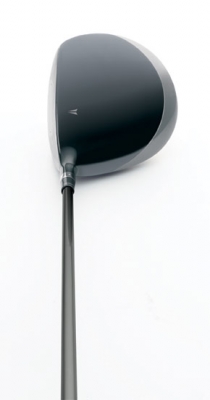 |
But it also seems clear the club is meant for everyone – and Stites confirmed that. He says the SasQuatch is different (and improved) from his earlier designs, and they’re always working towards producing something that works better: “We’re utilizing every trick of the trade in materials and casting techniques to introduce our new products. The SasQuatch is different because of its unique geometry. Nothing makes a difference like geometry!”
I only wish I’d paid more attention to it all those years ago. If we only knew then what we know now…, Stites might have more competition for the lead in cutting-edge club design.
The SasQuatch’s huge size and shape certainly leads to the inevitable question – is there more room for something bigger? Again, Stites provides the clues. “Because the USGA has limited the volume (or the number of cc’s the club will displace or occupy), we will not see any larger actual volumes for driver heads.”
He continues, “We can, however, make the club ‘play bigger’ by increasing the MOI. The golf ball only ‘knows’ MOI, not the volume of the club. For years now, because volumes got bigger, the MOI got bigger automatically. Now that there’s a limit on volume, we must engineer new geometries that increase the MOI without making the volume get bigger. That is actually what the SasQuatch is all about. The golf ball ‘believes’ it has been hit by a club much bigger than 460cc’s,” Stites said.
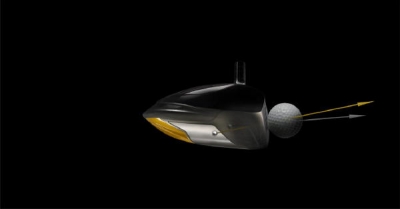 |
We’re all for fooling the golf ball. We know the golf ball also ‘fools’ the golf club by flying farther due to multi-layer solid core construction and dimple technology inspired by space-age computer model design and materials. Where nobody’s fooling is how much better these clubs and balls can make us play – at least compared to the ‘old’ days. I’m an average handicapper, but it’s always fun to play the back tees. Clubs like the SasQuatch allows me to do that, and the marshals don’t give me dirty looks for being out of my league.
Has it meant lower scores? Not necessarily, but it makes the game more fun. As Bobby Jones said, the only way to improve at golf is developing a ‘sound method’ of swinging the golf club. If you don’t have that, all the great equipment in the world isn’t going to help.
Continuing in the geometry theme is the Nike Slingshot OSS Irons. The Slingshot OSS clubs take oversize game improvement irons to a new level. They’ve got the exceptionally large oversized heads, but also a notably wider sole design that will remind you of flat-soled sand wedges. Like the SasQuatch, you’ll realize instantly that these aren’t what you’ve grown up with.
And they’ll take a little while to get used to, too.
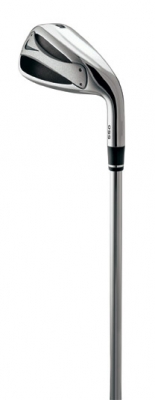 |
Stites describes the OSS’s differences from earlier models. “Wider soles, deeper, lower cgs (center of gravity), higher MOI’s – all things that make clubs easier to hit by folks that are ‘skills challenged.’”
“The unique OSS geometry makes the clubs play bigger and easier than anything before. It’s all about effective geometry, baby,” Stites mused.
Geometry is the word, because again, the looks of the Slingshot OSS irons is apart from anything you’ve ever seen in irons. The idea of a ‘cavity backed’ iron is hardly new, but the OSS takes it to an extreme. There’s the cavity behind the club face, but also a metal bar that connects side to side. It goes from being a ‘cavity back’ to almost a ‘hollow back.’
The heads are large – as big as any in the pro shop. The look at address isn’t that foreign, but you’ll certainly need to adjust to it.
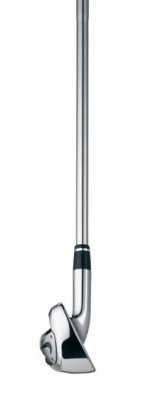 |
All of these factors should be part of mulling over what irons to purchase. Stites recommends hitting them, feeling them, hearing them and watching the ball fly. “There’s nothing like it.”
Stites also says the clubs are meant for the ‘least’ amongst us, though better players are finding the OSS concept is helping them as well. “Players with the least skill will enjoy the most from the whole set. The better players have discovered the OSS, however, in the 2 and 3 irons – for high, long, quick stopping long-iron shots.”
It’s a good thing Stites mentioned that, since the make-up of the OSS set isn’t the same as the traditional eight iron format. The OSS irons off the shelf runs 4-PW, though there’s an ‘A’ Wedge (Approach Wedge) in the set to replace the three-iron. You’ll need to do some experimenting to see how far each club flies, especially the ‘A’ wedge, which will be somewhat strange when you first see it.
Will the OSS make your shots go farther? Maybe. “Every manufacturer says its clubs are the best. But we here at Nike simply state that because the MOI on the OSS is larger than anything in history, the average shot has the chance to be longer. That’s a physics fact,” Stites proclaimed.
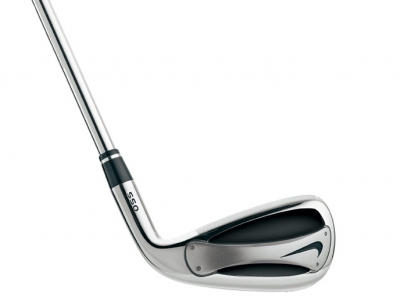 |
In other words, Sir Isaac Newton gives you an opportunity to hit it longer – but he won’t fix your golf swing. Sometimes it’s tough being human, and no physics formula can explain it.
That chance to be perfect is all we can ask for.
I personally enjoyed playing the Nike Slingshot OSS irons, as well as the SasQuatch driver. The ‘geometry’ of both types of clubs requires some time to ‘accept’ them, until your brain will finally realize that you don’t need to swing any different with them than with any other golf club.
Like with all premium golf clubs, we’d suggest consulting with your local golf professional, and if the concept of the clubs sounds interesting enough, that you try them out. Most of the clubs these days are a lot different in looks than the old muscle-back blades – but these concepts have been tested for years by the best golfers in the game, and can truly help you play differently, if not better, than what you’ve used in the past.
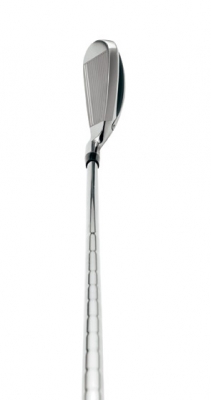 |
It’s a difference in feel that only Geometry can bring about – bet you never thought that’d happen during those sleepy math period sessions in high school.
Details:
Nike Golf’s SasQuatch Driver and Slingshot OSS Irons
Available at your higher-end golf retailers and club pro shops.
| Related Links | Comments on this article? | |
|
Maryland National Golf Club Hollow Creek Golf Club Rocky Gap Resort PB Dye Golf Club in Ijamsville Whiskey Creek Golf Club |
E-mail Jeff Rendall, Editor: jrendall@golftheunitedstates.com |












